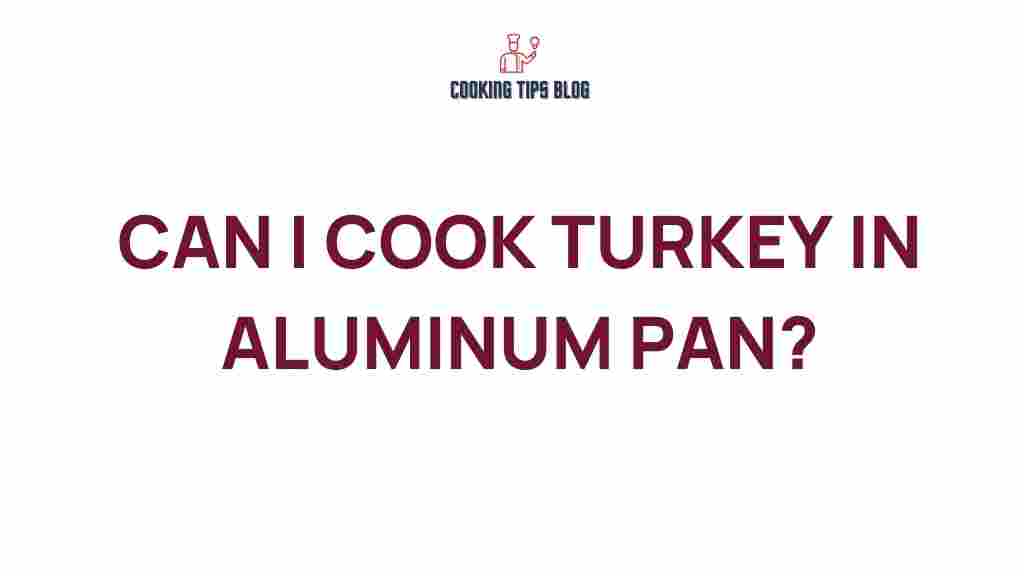Can Cooking Turkey in an Aluminum Pan Lead to Culinary Perfection?
When it comes to holiday feasts, few dishes are as iconic as a perfectly cooked turkey. The aroma, the golden-brown skin, and the tender meat all contribute to the allure of this majestic bird. But what if we told you that the choice of cooking vessel could impact your turkey cooking results? Specifically, can cooking turkey in an aluminum pan lead to culinary perfection? In this article, we will delve deep into the world of turkey cooking, explore the benefits and drawbacks of using aluminum pans, and provide you with a step-by-step guide to achieving that perfect turkey.
The Benefits of Cooking Turkey in an Aluminum Pan
Aluminum pans have become a popular choice for many home cooks, particularly during the busy holiday season. Here are some of the key benefits of using aluminum pans for turkey cooking:
- Lightweight: Aluminum pans are much lighter than traditional roasting pans, making them easier to handle, especially when moving a heavy turkey.
- Cost-effective: They are often cheaper than other options, allowing you to save money during your festive preparations.
- Heat Conductivity: Aluminum is known for its excellent heat conductivity, which can help cook the turkey evenly.
- Easy Cleanup: Most aluminum pans are disposable, making cleanup a breeze after your big feast.
- Versatile Sizes: Aluminum pans come in a variety of sizes, accommodating turkeys of all weights.
Potential Drawbacks
While aluminum pans offer numerous advantages, there are also some potential drawbacks to consider:
- Durability: Aluminum pans can be less sturdy than their metal counterparts, which may lead to bending or spilling.
- Flavor Transfer: Some cooks argue that aluminum can impart a metallic taste, particularly if the turkey is marinated with acidic ingredients.
- Non-Reusability: If you opt for disposable aluminum pans, you won’t be able to use them for future meals.
Step-by-Step Guide to Cooking Turkey in an Aluminum Pan
Now that you understand the pros and cons, let’s explore the step-by-step process of turkey cooking in an aluminum pan to achieve the best results:
Step 1: Choose the Right Aluminum Pan
Select an aluminum pan that is appropriately sized for your turkey. A good rule of thumb is to choose a pan that is at least 2 inches larger than the turkey on all sides. This will provide ample space for drippings and allow for even cooking.
Step 2: Prepare Your Turkey
Before cooking, make sure your turkey is fully thawed. Remove the giblets and neck from the cavity, and pat the turkey dry with paper towels. This helps achieve crispy skin.
Step 3: Seasoning
Season your turkey generously with salt, pepper, and any of your favorite herbs and spices. You can also create a flavorful brine or marinade if you have the time. Consider using:
- Garlic and herb butter
- Apple cider brine
- Herb-infused olive oil
Step 4: Preheat the Oven
Preheat your oven to 325°F (165°C). This moderate temperature will ensure even cooking without drying out the turkey.
Step 5: Place the Turkey in the Pan
Carefully place your seasoned turkey breast-side up in the aluminum pan. If desired, you can use a roasting rack to elevate the turkey for better air circulation.
Step 6: Tent with Foil
Cover the turkey loosely with aluminum foil. This will help retain moisture during the initial cooking phase. Remove the foil during the last hour to promote browning.
Step 7: Cooking Time
The general rule for cooking turkey is about 13 minutes per pound. Use a meat thermometer to check the internal temperature:
- 165°F (75°C) in the breast
- 175°F (80°C) in the thigh
Step 8: Resting the Turkey
Once your turkey reaches the appropriate temperature, remove it from the oven and let it rest for at least 20-30 minutes before carving. This allows the juices to redistribute, ensuring a moist turkey.
Troubleshooting Common Issues
Even with the best preparation, issues can arise during turkey cooking. Here are some common problems and how to fix them:
Problem: Dry Turkey
If your turkey turns out dry, it may be due to overcooking. Always rely on a meat thermometer for accuracy. Additionally, consider brining your turkey before cooking for added moisture.
Problem: Undercooked Turkey
If your turkey is undercooked, return it to the oven immediately. Cover it with foil if necessary to prevent over-browning, and continue cooking until the internal temperature reaches the safe levels mentioned above.
Problem: Soggy Skin
To achieve a crispy skin, ensure your turkey is dry before seasoning. Also, allowing air to circulate by using a roasting rack can help achieve crispiness.
Problem: Uneven Cooking
To prevent uneven cooking, rotate the turkey halfway through the cooking time and ensure it is centered in the oven.
Conclusion
Cooking turkey in an aluminum pan can indeed lead to culinary perfection, provided you follow the right techniques and tips. The lightweight, cost-effective nature of aluminum pans makes them an excellent choice for turkey cooking, especially for those who may be cooking for large gatherings. With proper preparation, seasoning, and attention to cooking times, your turkey can turn out beautifully golden and juicy, delighting your guests during the holiday season.
For more tips on turkey cooking and other holiday recipes, be sure to check our cooking guide and take your culinary skills to the next level!
For additional information on cooking methods and recipes, feel free to visit this informative website.
This article is in the category Recipes and created by Cookingtipsblog Team
